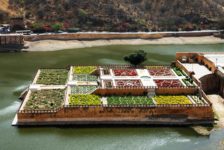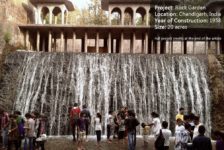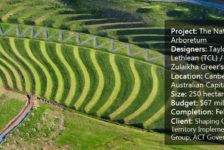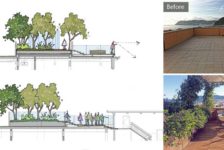La Kagu, designed by Japanese architects Kengo Kuma and Associates, in Tokyo, Japan. The La Kagu building designed by Japanese architects Kengo Kuma and Associates was a project that turned an old book warehouse into a multipurpose space with a lifestyle store and café. The original warehouse was maintained by the Shinchosha publishing company, which asked architect Kengo Kuma to restore the building. Kuma, a long-term resident of the neighborhood, understood the needs of renovating such an historical building. The company’s goal was to create a solid link between the present and the past.
La Kagu
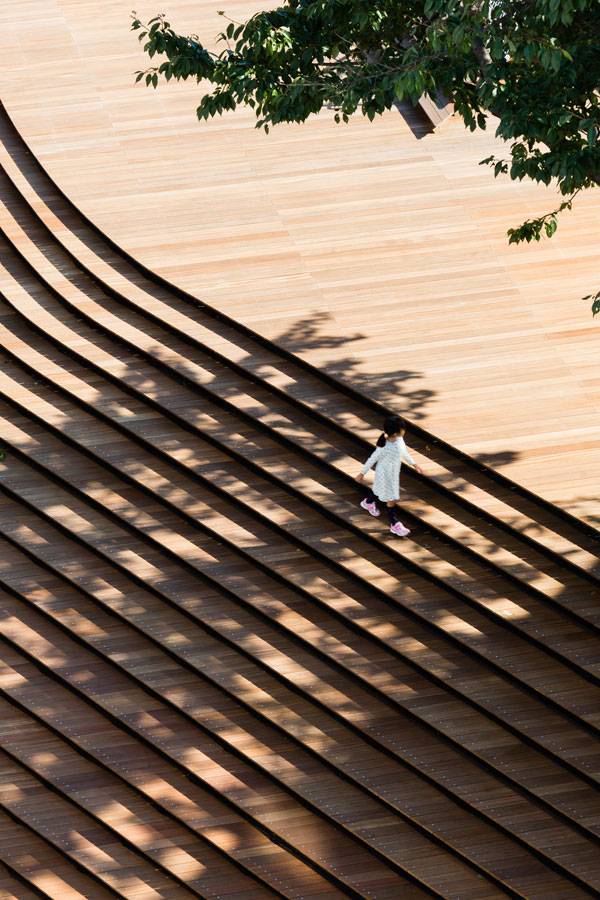
La Kagu. Photo credit: Keishin Horikoshi / SS Tokyo
Reusing Materials to Enhance the Design
From the beginning, the project showed a unique respect for the site conditions by reusing the existing steel structure of the building, constructed in 1965, and by commemorating the affected topography of the site. While the first concept was part of the leading idea for the interior design, the intention to respect the original topography of the site defined the design for the outdoor project, which mainly relies on the principal staircase.
More Top Articles on LAN
- 10 of the Most Common Mistakes People Make in Planting Design and How to Avoid Them
- Interested But Not Confident? – Know How to be Good at Hand Drawings
- Top 10 YouTube Tutorials for Technical Drawing
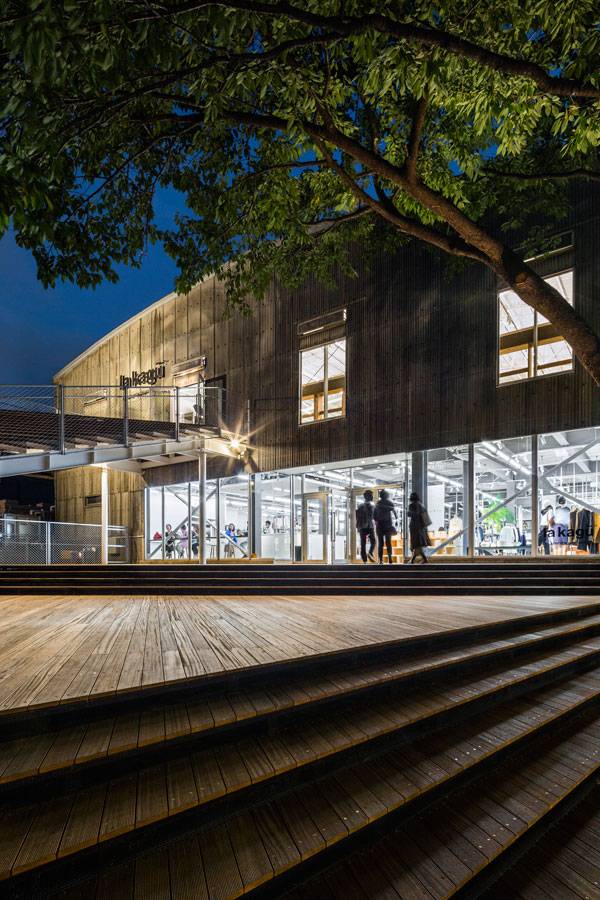
La Kagu. Photo credit: Keishin Horikoshi / SS Tokyo
Form and Function Combined with the Past
In order to get access to the different levels of the store of La Kagu, Kuma established that the access would be by a single timber-and-steel staircase that diverges in the middle, leading to the first and second floors of the store. The pavement selected, color, dimensions, and textures recreate a kind of model of the original topography of the non-existing hill.
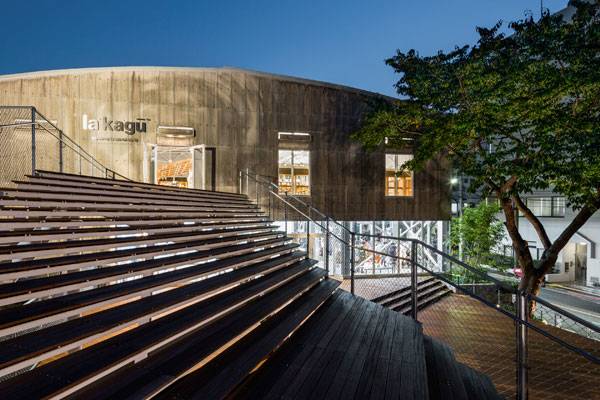
La Kagu. Photo credit: Keishin Horikoshi / SS Tokyo
Stepping with Contours
Each contour is each step. The brown appearance of the staircase intensifies its topography model aspect, which disembogues onto “Waseda-dori” street like a snake, marking the end of the sidewalk and the beginning of the store. Another important aspect of the wooden staircase is the timber material. Its aspect, color, and dimensions create a unique, warm pavement pattern that transforms the staircase into a venue for events. According to the architects, this kind of public atrium has already been used to host a local farmers’ market.
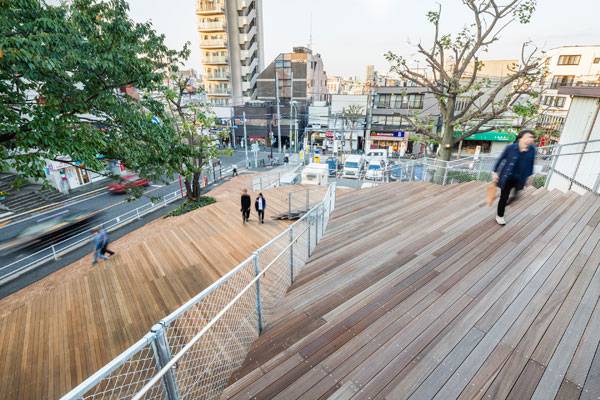
La Kagu. Photo credit: Keishin Horikoshi / SS Tokyo
Design Acting as a City Boundry
The staircase also fulfills its functions as a city boundary. While it functions as an open public atrium, it also has the character to open up the narrow streets of Japan. La Kagu’s open entrance area gives a break to the citizens, by amplifying the corner and changing the atmosphere of the site, creating a strong contrast between the rigid urbanism and the organically shaped wooden staircase.
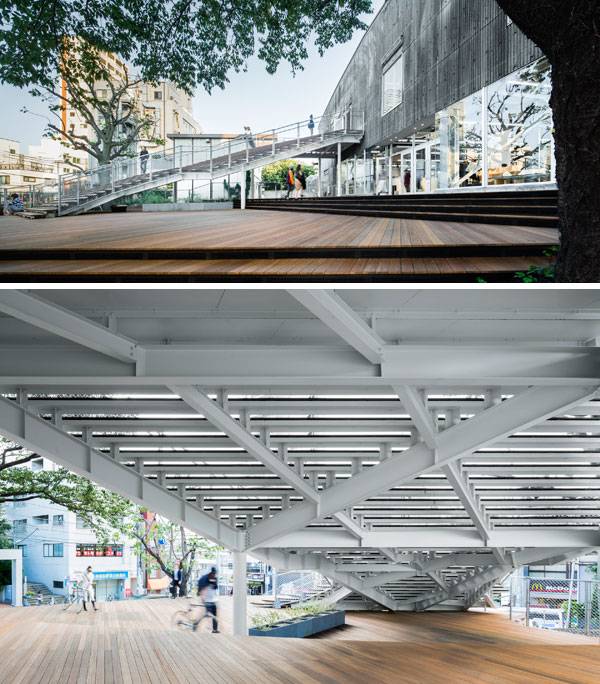
La Kagu. Photo credit: Keishin Horikoshi / SS Tokyo

La Kagu. Photo credit: Keishin Horikoshi / SS Tokyo
The Influence of the Trees Within The Design
The presence of the trees also follows the idea of celebrating the past. This aspect is also a matter of Japanese design, in which the tree symbolizes the presence of spirits. The old trees (three species of the Platanus family) became a fundamental part of the staircase and the façade of the building; they show how strong and important they are to the Japanese landscape design by breaking the geometry of the timber-and-steel staircase.
The Alliance Between Building And Nature
Despite their size, each tree creates a unique link with the building and respects its restoration. Their relationship evolves each autumn and winter, when the trees lose their foliage and visitors and pedestrians rediscover the entire steel façade of the building. This alliance between building and nature works in equilibrium with the environment, maintaining the natural order of the site.
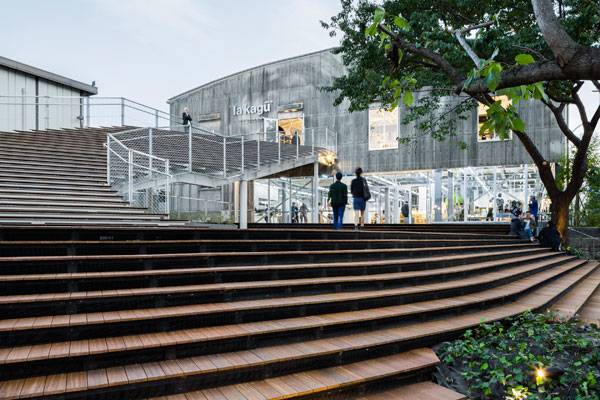
La Kagu. Photo credit: Keishin Horikoshi / SS Tokyo
How Important is Outdoor Design for Indoor Design?
The presence of the wooden staircase also affects the interior design of La Kagu. As we can observe in the pictures, the structure of the staircase brings enough indirect daylight into the lifestyle store and café by exploiting the northern boundary of the site.

La Kagu. Photo credit: Keishin Horikoshi / SS Tokyo
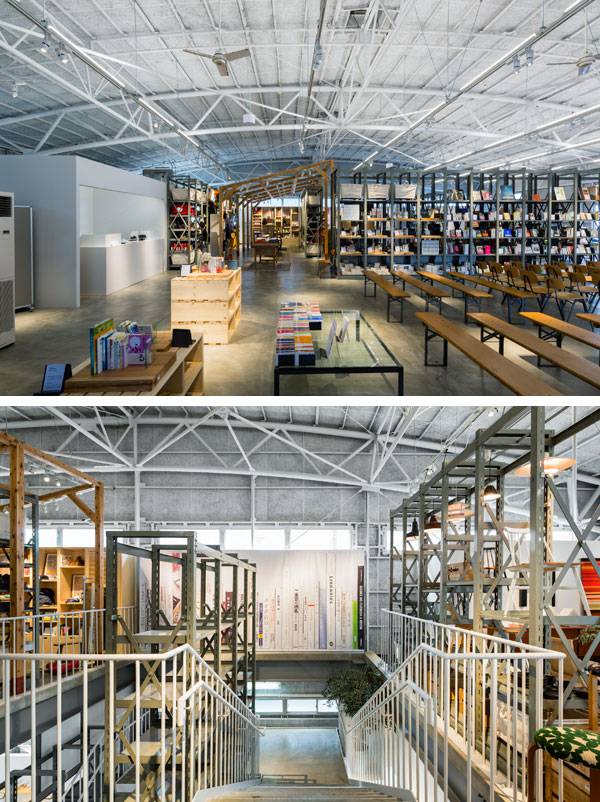
La Kagu. Photo credit: Keishin Horikoshi / SS Tokyo
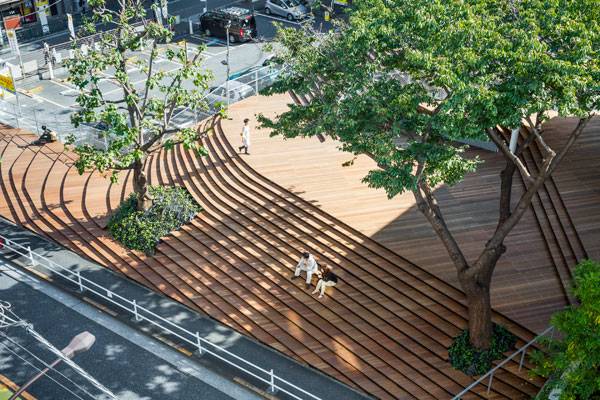
La Kagu. Photo credit: Keishin Horikoshi / SS Tokyo
Full Project Credits For La Kagu
Project: La Kagu Location: Tokyo, Japan Architect: Kengo Kuma and Associates Area: 962.45 sqm Year: September, 2014 Client: Shinchosha publishing company Use: shop, café Photography: Keishin Horikoshi / SS Tokyo Recommended Reading:
- Urban Design by Alex Krieger
- The Urban Design Handbook: Techniques and Working Methods (Second Edition) by Urban Design Associates
Article by Luis Eduardo Guísar Benítez Return to Homepage
Published in Blog




